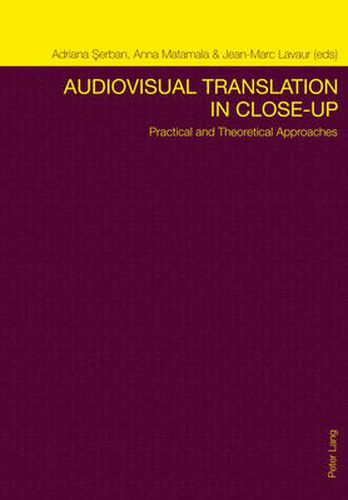Readings Newsletter
Become a Readings Member to make your shopping experience even easier.
Sign in or sign up for free!
You’re not far away from qualifying for FREE standard shipping within Australia
You’ve qualified for FREE standard shipping within Australia
The cart is loading…






This title is printed to order. This book may have been self-published. If so, we cannot guarantee the quality of the content. In the main most books will have gone through the editing process however some may not. We therefore suggest that you be aware of this before ordering this book. If in doubt check either the author or publisher’s details as we are unable to accept any returns unless they are faulty. Please contact us if you have any questions.
How are audiovisual translations made and received? This is just one of the questions this book offers answers to. Bringing together research on various forms of audiovisual translation, the range of issues treated is wide: How are discourse features translated in dubbed and subtitled programmes? Does subtitling enhance foreign language learning? Can the quality of audiovisual translation be assessed in a relevant way? What should we know about the audience? How should we audio describe? Audiovisual Translation in Close-up addresses these issues from a variety of perspectives: from discourse analysis and pragmatics to cognitive science, second language acquisition, actor-network theory and speech recognition, amongst others.
Most contributions to this volume originate from the international bilingual conference Audiovisual Translation: Multidisciplinary Approaches/La traduction audiovisuelle : Approches pluridisciplinaires held in Montpellier, France, in 2008.
$9.00 standard shipping within Australia
FREE standard shipping within Australia for orders over $100.00
Express & International shipping calculated at checkout
This title is printed to order. This book may have been self-published. If so, we cannot guarantee the quality of the content. In the main most books will have gone through the editing process however some may not. We therefore suggest that you be aware of this before ordering this book. If in doubt check either the author or publisher’s details as we are unable to accept any returns unless they are faulty. Please contact us if you have any questions.
How are audiovisual translations made and received? This is just one of the questions this book offers answers to. Bringing together research on various forms of audiovisual translation, the range of issues treated is wide: How are discourse features translated in dubbed and subtitled programmes? Does subtitling enhance foreign language learning? Can the quality of audiovisual translation be assessed in a relevant way? What should we know about the audience? How should we audio describe? Audiovisual Translation in Close-up addresses these issues from a variety of perspectives: from discourse analysis and pragmatics to cognitive science, second language acquisition, actor-network theory and speech recognition, amongst others.
Most contributions to this volume originate from the international bilingual conference Audiovisual Translation: Multidisciplinary Approaches/La traduction audiovisuelle : Approches pluridisciplinaires held in Montpellier, France, in 2008.